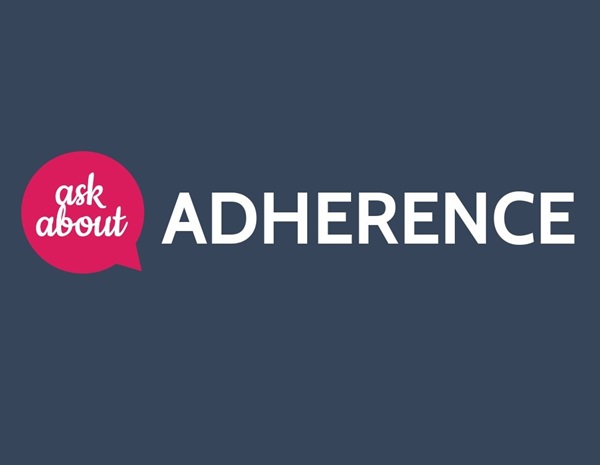 Ask About Adherence is a blog series featuring Q&A’s with experts in medication adherence. In this post, we speak with Helaine E. Resnick, PhD, MPH about her recently published literature review with Dr. Michael Chernew PhD, “Provider Behavior and Treatment Intensification in Diabetes Care.” Dr. Resnick set out to synthesize published information on what is known about treatment intensification in the setting of diabetes care. The review found considerable evidence suggesting that diabetes treatment is not intensified when guidelines suggest that it should be. The report also suggested that we need a better understanding of how practice- and physician-level characteristics influence diabetes treatment patterns, including those that are associated with a greater or lesser likelihood of intensifying guideline-driven treatment. Improved understanding of these factors has the potential to shed light on medication adherence patterns because of the known relationship between demanding medication regimens and unfavorable adherence.
Ask About Adherence is a blog series featuring Q&A’s with experts in medication adherence. In this post, we speak with Helaine E. Resnick, PhD, MPH about her recently published literature review with Dr. Michael Chernew PhD, “Provider Behavior and Treatment Intensification in Diabetes Care.” Dr. Resnick set out to synthesize published information on what is known about treatment intensification in the setting of diabetes care. The review found considerable evidence suggesting that diabetes treatment is not intensified when guidelines suggest that it should be. The report also suggested that we need a better understanding of how practice- and physician-level characteristics influence diabetes treatment patterns, including those that are associated with a greater or lesser likelihood of intensifying guideline-driven treatment. Improved understanding of these factors has the potential to shed light on medication adherence patterns because of the known relationship between demanding medication regimens and unfavorable adherence.
Stay tuned for the next Q&A and be sure to share your thoughts in the comments section below. We’d love to hear from you on ways to improve medication adherence!

SAMANTHA DOUGHERTY: What is treatment intensification and when is it necessary?
HELAINE RESNICK: Treatment intensification is a term that describes the decision to either increase the dose of an existing medication, and/or add a new medication to an existing regimen. Although treatment intensification can also refer to lifestyle modifications and non-pharmacologic treatment modalities, the term is generally used in relation to drug treatment. In most cases, the decision to intensify treatment is made because a patient has not met established treatment goals. For example, a physician who is treating a patient with type 2 diabetes whose blood glucose is not well controlled with oral medication alone may recommend an increased dose of oral medication or the addition of insulin to the patient’s medication regimen. Professional organizations provide general guidance to physicians on recommended targets for their patients, and these recommendations are usually based on evidence linking specific treatment goals with favorable health outcomes. However, these practice guidelines are often presented with the understanding that doctors and patients should work together to define goals that meet the specific needs of individual patients.
DOUGHERTY: Was there something particularly interesting about treatment intensification in diabetes care?
RESNICK: Diabetes is among the most common chronic conditions in the United States—about 9.3 percent of the population has diabetes—and there are clear practice guidelines for managing patients with this condition. Although there are variations among patients, exceptions to rules, disagreements about specific regimens under some circumstances, and important gaps in knowledge, control of blood sugar is nevertheless recognized as yielding better clinical outcomes. Because response to diabetes treatment is assessed with routine blood tests, the extent to which patients have reached recommended targets is relatively straightforward to study in many data sets, as is the timing of new prescriptions.
DOUGHERTY: What did your review of the literature find about treatment intensification in diabetes care?
RESNICK: We found no shortage of diabetes treatment intensification studies that used large medical records databases, insurance claims and pharmacy data. These reports left little doubt that in practice, diabetes treatment is frequently not intensified in response to glucose levels that exceed practice guidelines. However, we also found that physicians understand guidelines concerning glucose targets, suggesting that lack of treatment intensification does not result from lack of physician knowledge.
DOUGHERTY: What are some of the more subtle considerations related to your findings?
RESNICK: A number of studies we reviewed provided insight on factors that influence providers’ decisions about treatment intensification. For example, we found that physician perceptions about their patients’ life expectancy, diabetes self-management skills, educational attainment and health literacy influence how physicians establish glucose targets and whether they initiate insulin treatment. In addition, our review suggested that physician perceptions about patients’ medication adherence behaviors also influence these decisions. Another theme that emerged from our work involved how patient age influences treatment intensification. We found that increasing numbers of older, medically complex patients, the availability of a multitude of diabetes treatment options, the risks associated with polypharmacy, and physicians’ concerns about hypoglycemia can act together to reduce the likelihood of treatment intensification among elderly patients with high glucose levels. For older patients, diabetes may be one of many problems that the patient wishes to address during an office visit, and it may not be on the top of the problem list for either the patient or the physician. In these cases, the decision not to intensify treatment probably reflects competing demands and limited time rather than poor care.
DOUGHERTY: What can future research focus on to enhance our understanding about diabetes care?
RESNICK: A striking observation in our review was the absence of qualitative information that helps place objective treatment intensification decisions in a real-life context. These qualitative factors may help explain decision-making in instances where diabetes treatment was not intensified when guidelines called for it. Future research could focus on improved understanding of providers’ perceptions about their patients, and whether improved communication reduces variance from practice guidelines when treatment intensification is a goal that is shared by both the patient and his or her physician.



 Ask About Adherence is a blog series featuring Q&A’s with experts in medication adherence. In this post, we speak with Helaine E. Resnick, PhD, MPH about her recently published literature review with Dr. Michael Chernew PhD, “
Ask About Adherence is a blog series featuring Q&A’s with experts in medication adherence. In this post, we speak with Helaine E. Resnick, PhD, MPH about her recently published literature review with Dr. Michael Chernew PhD, “


